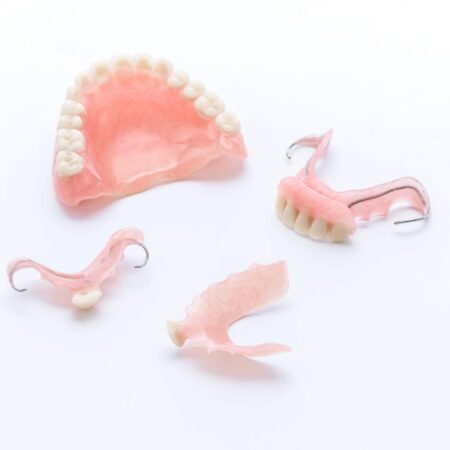What to Know About Eruption of Child’s Permanent Teeth

When your child is born, they have a full set of 20 primary teeth that grows in by the age of three. After that, your child’s permanent teeth push out the baby teeth throughout childhood until they’re all completely replaced. This process is known as eruption.
Difference Between Primary Teeth and Permanent Teeth
Your baby’s primary teeth, also called baby teeth, begin to loosen and fall out around the age of six. For most children, loss of primary teeth happens in a predictable pattern, and permanent teeth replace the ones falling out.
The bottom middle teeth, called lower central incisors, fall out first. They are followed by the top middle teeth, also called upper central incisors. The remaining teeth your child loses include:
- Lateral incisors
- First molars
- Canines
- Second molars
Usually, your child’s primary teeth come out naturally as the permanent teeth push their way up into place. If your child’s baby teeth decay or break from an accident, a dentist may need to pull them out. When this happens, permanent teeth may come in earlier than expected.
Early eruption of permanent teeth can lead to crowding, causing the teeth to come in crooked.
Permanent teeth are also called adult teeth or secondary teeth. They begin to develop around birth and continue through childhood until the teeth erupt through the gums.
Most people have all 32 permanent teeth by the age of 21. In some cases, the third molars, also called wisdom teeth, don’t develop or erupt properly. Because of this, having 28 permanent teeth is also considered normal.
Permanent Tooth Eruption
When your child is around six years old, their first permanent molars begin to erupt. These four molars come in behind the primary teeth. Following these molars, your child’s other permanent teeth take the place of primary teeth as they’re lost.
These changes can be uncomfortable for your child. You can help make the process easier by:
- Providing reassurance that losing baby teeth is a normal part of the process for getting permanent teeth.
- Using a cold compress to relieve discomfort
- Offering pain medication as recommended by your child’s pediatrician
- Celebrating the loss of baby teeth and the excitement of seeing permanent teeth come in
While eruption can vary by child, you can generally these ages for permanent teeth coming in:
- First molars – Around 6 to 7 years old
- Central incisors – Around 6 to 8 years old
- Lateral incisors – Around 7 to 8 years old
- Canine teeth – Around 9 to 13 years old
- Premolars – Around 9 to 13 years old
- Second molars – Around 11 to 13 years old
- Third molars (wisdom teeth) – Around 17 to 21 years old if they come in at all
Importance of Dental Care
It’s always good to take care of baby teeth to prevent tooth decay. As your child’s permanent teeth come in, it becomes increasingly important to promote dental hygiene.
If your child’s permanent teeth are damaged, they may need expensive dental work to repair the teeth in the future. If the damage is too bad, their permanent teeth must be removed.
Your child should brush their teeth twice per day. It’s important to supervise and help until your child is able to brush independently. Flossing between teeth is especially important if your child has permanent teeth coming in that are touching because bacteria can get trapped in smaller spaces.
A big part of dental care is watching what you eat. Maintain a healthy diet and avoid sugary foods that promote tooth decay. You should also avoid hard foods that may cause chips and breakage to either baby teeth or permanent teeth.
Schedule regular dental visits once your child has baby teeth to monitor for proper growth and development. It also helps your child to get more comfortable with visiting the dentist’s office for regular cleanings.
Braces for Crooked or Crowded Permanent Teeth
If your child’s permanent teeth come in crooked or crowded for any reason, they may need braces. Many people think braces are only used to straighten teeth that are crooked. However, orthodontic treatment improves your overall dental health by:
- Preventing decay and gum disease
- Reducing your chance of losing teeth
- Improving your ability to chew
- Improving your speech if it is affected by your bite
- Decreasing wear on your enamel from teeth touching
- Fixing jaw misalignment that leads to an overbite or underbite
Your orthodontist talks to you about your child’s dental needs and recommends a variation of braces treatment. Traditional braces use brackets that are cemented to your teeth.
A thin wire connects all the brackets together and moves your teeth slowly over time until the desired results are achieved.
Clear aligners work similarly by moving your teeth incrementally over time, although you can take the aligners in and out between meals and brushing. Most people need braces for one to three years.
Once your braces treatment is complete, you wear a retainer at night to maintain the results.














Leave a Reply